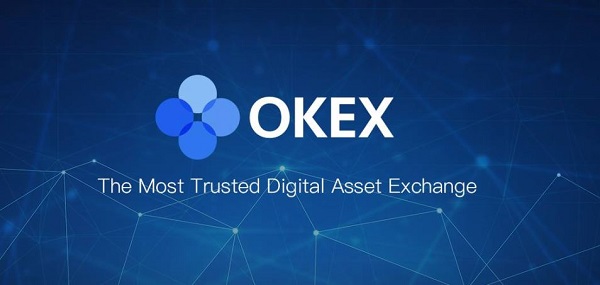
Join our daily and weekly newsletters for the latest updates and exclusive content on industry-leading AI coverage. Learn More
The vibe coding phenomenon—where developers increasingly rely on AI to generate and assist with code—has rapidly evolved from a niche concept to a mainstream development approach.
With tools like GitHub Copilot normalizing AI-assisted coding, the next battleground has shifted from code generation to end-to-end development workflows. In this increasingly crowded landscape, players like Cursor, Lovable, Bolt and Windsurf (formerly codeium) have each staked their claim with various approaches to AI-assisted development.
The term vibe coding itself represents a cultural shift in which developers focus more on intent and outcome than manual implementation details—a trend that has both enthusiastic advocates and skeptical critics.
Vibe coding is all about using AI-powered tools to help with basic code completion tasks and generate entire applications with just a few prompts. Vibe coding diverges from low-code/no-code platforms by going beyond visual tools for simple business applications.
According to some advocates, vibe coding promises to augment or even potentially replace real software developers.
In this competitive field, Windsurf’s latest Wave 6 release which debuted on April 2 addresses a gap that some tools have often ignored: deployment. While code generation has become increasingly sophisticated across platforms, the journey from locally generated code to production deployment has remained stubbornly manual.
“We’ve really removed a lot of the friction involved with iterating and deploying applications,” Anshul Ramachandran, head of product and strategy at Windsurf told VentureBeat. “The promise of AI and all these agentic systems is that the activation energy, the barrier to building, is so much lower.”
Windsurf Wave 6 feature breakdown: What enterprises need to know
Looking specifically at the new features in Windsurf Wave 6, several enterprise capabilities address workflow bottlenecks:
Deploys: A one-click solution to package and share Windsurf-built apps on the public internet. Currently integrated with Netlify, allowing users to deploy websites or JavaScript web apps to a public domain.
Improved Performance for Long Conversations: Reduced quality degradation in extended conversations through checkpointing and summarization techniques.
Tab Improvements: Enhanced context awareness, including user search history and support for Jupyter Notebooks within the Windsurf Editor.
Conversation Table of Contents: New UX improvement that provides easy access to past messages and conversation reversion capabilities.
Conversation management: Technical innovation that matters
The Conversation Table of Contents feature in Wave 6 is also particularly interesting. It addresses a technical challenge that some competitors have overlooked: efficiently managing extended interactions with AI assistants when errors or misunderstandings occur.
“AI is not perfect. It will occasionally make mistakes,” Ramachandran acknowledges. “You’d often find yourself in this kind of loop where people try to prompt the AI to get out of a bad state. In reality, instead of doing that, you should probably just revert the state of your conversation to the last point where things were going well, and then try a different prompt or direction.”
The technical implementation creates a structured navigation system that changes how developers interact with AI assistants:
Each significant interaction is automatically indexed within the conversation.
A navigable sidebar allows immediate access to previous states.
One-click reversion restores previous conversation states.
The system preserves context while eliminating the inefficiency of repeatedly prompting an AI to correct itself.
Getting the ‘vibe’ of the vibe coding landscape
The Windsurf Wave 6 release has got some positive feedback in the short time it has been out.
Builders: you still using Cursor or have you switched to Windsurf? I’m hearing more and more developers are switching. https://t.co/euQCNU3OWu
— Robert Scoble (@Scobleizer) April 2, 2025
It’s a very active space, though, with fierce competition. Just last week, Replit Agent v2 became generally available. Replit Agent v2 benefits from Anthropic’s Claude 3.7 Sonnet, arguably the most powerful LLM for coding tasks. The new Replit Agent also integrates:
Enhanced Autonomy: Forms hypotheses, searches for relevant files and makes changes only when sufficiently informed.
Better Problem-Solving: Less likely to get stuck in loops; can step back to rethink approaches.
Realtime App Design Preview: Industry-first feature showing live interfaces as the Agent builds.
Improved UI Creation: Excels at creating high-quality interfaces with earlier design previews.
Guided Ideation: Recommends potential next steps throughout the development process.
Cursor is also highly active and offers a steady pace of incremental updates. Recent additions include chat tabs, which enable developers to have multiple conversations with the AI tool at the same time. On March 28, Cursor added support for the new Google Gemini 2.5 Pro model as an option for its users.
Bolt also released a new update on March 28, along with a new mobile release in beta. At the end of February, Bolt AI v1.33 was released, adding full support for Claude 3.7 and prompt caching capabilities.
Though not always included in the vibe coding spectrum, Cognition Labs released Devin 2.0 this week. Much like the tabbed feature in Windsurf Wave, Devin now has the ability to run multiple AI agents simultaneously on different tasks. It also now integrates interactive planning that helps scope and plan tasks from broad ideas. Devin 2.0 also integrates a novel search tool to navigate better and understand codebases
The evolution of developer roles, not their replacement
The vibe coding movement has sparked debates about whether traditional programming skills remain relevant.
Windsurf takes a distinctly pragmatic position that should reassure enterprise leaders concerned about the implications for their development teams.
“Vibe coding has been used to refer to the new class of developers that are being created,” Ramachandran explains.
“People separating the ‘vibe coders’ and the ‘non-vibe coders’—it’s just a new class of people that can now write code, who might not have been able to before, which is great,” Ramachandran said. “This is how software has expanded over time, we make it easier to write software so more people can write software.”
Much like how low-code and no-code tools never fully replaced enterprise application developers in the pre-AI era, it’s not likely that vibe coding will entirely replace all developers. Vibe coding is fundamentally more powerful than low-code and no-code tools. Users can build all manner of applications without almost any restrictions. Perhaps more importantly, across many of the modern vibe coding tools is the ability to integrate with existing processes and even code bases in some cases.
It’s unclear which tool will be the winner in the space, and trying to pick a winning tool is probably not the right choice anyway, given how fast development is happening. Much like how enterprise developers have always had a choice of tools for any developer, the same will be true in the vibe coding era.
Enterprise will be well advised to try out different tools and see what works best for their particular style and workflow. For technical leaders evaluating their approach to AI-assisted development, several considerations should inform strategic planning:
Evaluate end-to-end workflows, not just code generation: Assess how potential tools address the full development lifecycle from concept to deployment, not just the coding phase.
Consider enterprise-specific requirements upfront: Tools designed primarily for individual developers often struggle when scaled to enterprise requirements for compliance, security and team collaboration.
Balance democratization with governance: The promise of expanded developer access must be balanced with mechanisms to ensure code quality, security, and maintainability.
Plan for skill evolution, not replacement: Develop strategies for augmenting existing developer skills with AI capabilities rather than attempting wholesale replacement.
Prioritize context management capabilities: As deployments scale, the ability to efficiently manage complex codebases and recover from AI errors becomes increasingly important.
The vibe coding movement offers genuine opportunities to accelerate development and expand who can contribute, but realizing these benefits in enterprise contexts requires tools designed with enterprise realities in mind.





Be the first to comment